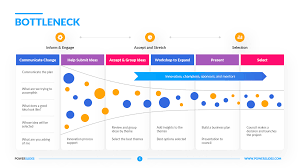In today’s fast-paced business environment, efficiency is key. Understanding where bottlenecks occur in processes can help organizations streamline their operations and improve productivity. One powerful tool in identifying these inefficiencies is a bottleneck calculator. This article will delve into the concept of bottlenecks, the importance of using a bottleneck calculator, and how to effectively implement it to enhance workflow efficiency.
Table of Contents
Understanding Bottlenecks
Bottlenecks are points in a process where the flow of operations slows down due to limited capacity. They can occur in various scenarios, such as manufacturing, project management, or service delivery. Identifying bottlenecks is crucial for any organization, as they can lead to increased lead times, reduced output, and ultimately, lost revenue.
Types of Bottlenecks
Bottlenecks can be classified into several categories:
- Physical Bottlenecks: These occur due to limitations in machinery, equipment, or human resources. For instance, a production line may slow down if one machine operates at a slower rate than others.
- Policy Bottlenecks: Organizational policies can also create bottlenecks. For example, lengthy approval processes can delay project completion.
- Resource Bottlenecks: Insufficient resources, whether human or material, can lead to bottlenecks. This is common in situations where demand outstrips supply.
The Role of a Bottleneck Calculator
A bottleneck calculator is a tool designed to analyze processes and identify where bottlenecks occur. By inputting various data points related to workflow, organizations can gain insights into their operational efficiency and make informed decisions to optimize processes.
How to Use a Bottleneck Calculator

Using a bottleneck calculator involves several steps:
Step 1: Gather Data
The first step is to collect data on the process in question. This may include:
- Cycle times
- Work in progress (WIP)
- Resource availability
- Demand forecasts
Step 2: Input Data into the Calculator
Once data is gathered, it can be entered into the bottleneck calculator. Most calculators will require information on different stages of the process and their corresponding times.
Step 3: Analyze Results
After inputting the data, the bottleneck calculator will analyze it and provide insights on where bottlenecks are occurring. The output may highlight specific stages that are slowing down the overall process.
Step 4: Implement Changes
Based on the analysis, organizations can take targeted actions to address the identified bottlenecks. This may involve reallocating resources, modifying processes, or investing in new technology.
Benefits of Using a Bottleneck Calculator
The advantages of utilizing a bottleneck calculator are numerous:
Enhanced Productivity
By identifying and addressing bottlenecks, organizations can enhance overall productivity. When workflows are optimized, employees can work more efficiently, leading to higher output levels.
Improved Lead Times
Reducing bottlenecks can significantly improve lead times. This is especially crucial in industries where timely delivery is essential for customer satisfaction.
Cost Savings
By streamlining processes, organizations can reduce operational costs. Fewer delays and enhanced efficiency often translate into lower expenses.
Better Resource Allocation
A bottleneck calculator helps organizations understand where to allocate resources effectively. By identifying critical areas that require attention, companies can optimize their workforce and equipment usage.
Common Challenges in Identifying Bottlenecks
Despite the benefits, identifying bottlenecks can be challenging. Some common hurdles include:
Data Inaccuracy
If the data entered into the bottleneck calculator is inaccurate or outdated, the results may not be reliable. It’s essential to ensure that data collection methods are robust and that the information is current.
Complexity of Processes
In complex processes, multiple bottlenecks may exist simultaneously. A bottleneck calculator can highlight primary bottlenecks, but organizations must be vigilant in identifying additional constraints that may not be immediately apparent.
Resistance to Change
Implementing changes based on the bottleneck calculator results may encounter resistance from employees. It’s crucial to communicate the benefits of these changes clearly and involve team members in the decision-making process.
Real-World Applications of Bottleneck Calculators
Many industries can benefit from a bottleneck calculator. Here are a few examples:
Manufacturing
In manufacturing, a bottleneck calculator can analyze production lines to identify slow machines or processes. By addressing these issues, manufacturers can increase output and reduce waste.
Project Management
For project managers, a bottleneck calculator can help identify phases of a project that are lagging. This insight enables managers to allocate resources effectively and ensure timely project completion.
Healthcare
In healthcare, bottlenecks can occur in patient processing or treatment. A bottleneck calculator can identify delays in patient flow, helping hospitals improve care and enhance patient satisfaction.
Supply Chain Management
In supply chain management, bottlenecks can disrupt the entire flow of goods. A bottleneck calculator can analyze logistics processes, identifying areas for improvement that lead to a more efficient supply chain.
Future Trends in Bottleneck Analysis

As technology continues to evolve, the capabilities of bottleneck calculators are also advancing. Here are some future trends to watch:
Integration with AI
Artificial intelligence can enhance the functionality of a bottleneck calculator by providing predictive analytics. This can help organizations anticipate potential bottlenecks before they occur.
Real-Time Monitoring
Future bottleneck calculators may incorporate real-time data monitoring, allowing organizations to identify and address bottlenecks as they happen, rather than after the fact.
Cloud-Based Solutions
Cloud technology will enable more organizations to access bottleneck calculators from anywhere, facilitating collaboration and making data analysis more accessible.
Also read Sid Wilson The Multifaceted Artist Behind the Mask
Conclusion
In summary, a bottleneck calculator is an invaluable tool for any organization looking to optimize its processes and improve efficiency. By understanding the nature of bottlenecks, effectively using the calculator, and implementing targeted changes, businesses can enhance productivity, reduce costs, and ultimately deliver better value to their customers. Embracing this tool can lead to significant improvements in operational performance and a competitive edge in the marketplace.
As organizations face increasing pressures to perform, the strategic use of a bottleneck calculator will become even more critical in ensuring streamlined operations and sustained success.


